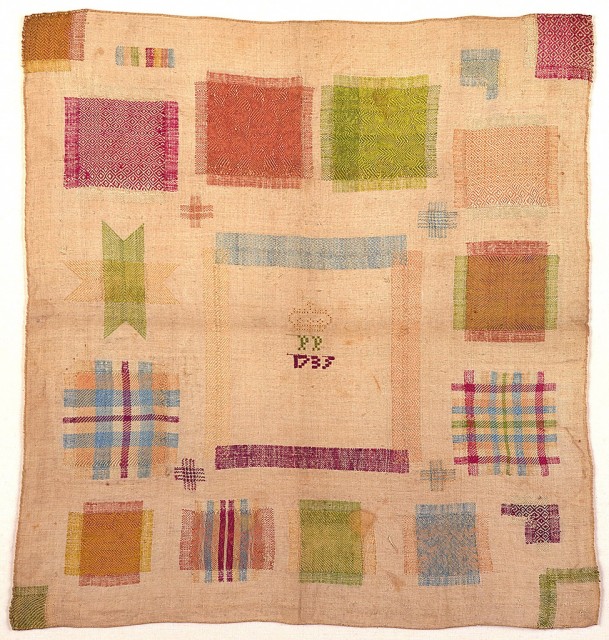When we talk about sustainability, why don’t we talk about mending?
The Netherlands-based Platform 21=Repairing project and its offshoot, Repair Cafés, do just that. Platform 21=Repairing published a manifesto extolling the benefits of mending, and the Repair Cafés bring together skilled tinkerers and those with items in need of repair together in a free social space over tea and coffee. Both of these initiatives engage the community, promote the sharing of hand skills, and resurrect a culture of caring enough to repair.
This darning sampler is also Dutch and was made in 1735 by a girl of about 12. She was confronted with a piece of fabric with 17 square-cut holes and with all four corners cut away. In the center and lower right corner she carefully darned the missing bits back into place and the rest she repaired with needle weaving (what you might call re-weaving if you were at the dry cleaners with a hole in your favorite wool pants). Each hole is filled in, thread by thread, with a different woven pattern to demonstrate the girl’s skill at repairing weave structures found in common household and clothing textiles such as herringbone, birds-eye twill, etc. Bright colors were originally selected to make it easier for the instructor to check for accuracy, but also contribute to a wonderfully fresh and modern overall effect.
While the textile industry is striving along with other industries to create fabrics from recycled, rapidly renewable or organic materials, the only truly sustainable option is to consume less. This sampler shows a reverence for the humble everyday objects that fill our homes (such as napkins, dishtowels, jeans, etc.) that we cannot afford not to emulate.
